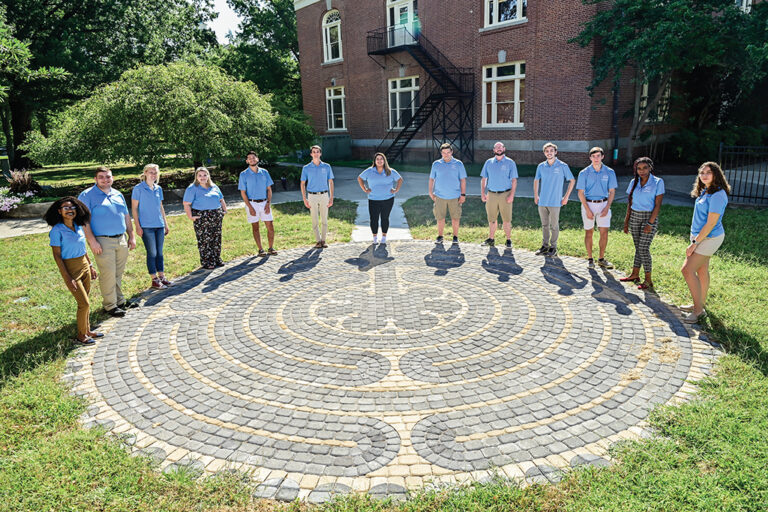When you visit Berea College, you might ask: “Why is there a labyrinth next to the Hutchins Library?”
The answer to that question dates back to before the College even opened its doors, according to Rev. Dr. Loretta Reynolds.
“About 15 years ago, labyrinths became popular as a tool for spiritual meditation and prayer, but the idea of a labyrinth as a meditation and spiritual-growth space goes back about 4,000 years,” she said. One of the best examples may be in Chartres Cathedral in France.
Because she is a part of the National Association of College and University Chaplains, Reynolds had the opportunity to visit multiple campuses where she saw various labyrinths. She thought having one at Berea College would be very appropriate and worked on creating one for 10 years.
Berea College’s commitment to inclusivity and its welcoming of different values and beliefs ensures there are safe spaces on campus, including Danforth Chapel in the Draper building and the All People’s Prayer Chapel in the Alumni building. Reynolds hopes the labyrinth becomes one of these spaces.
“People tend to confuse labyrinths with mazes,” she said. Reynolds explained that unlike labyrinths, the purpose of mazes is to get lost. With a labyrinth, however, people are supposed to walk the circuitous path with a mantra, meditation or a question in hopes to self-reflect or relieve stress.
A gift from the Campus Christian Center, the labyrinth will have a dedication service during the spring semester of 2020 once the space surrounding it is complete. Reynolds has taken students there, and her hope is to continue educating the community on what it is and how it can be helpful.
“One thing we hear about students all the time is how stressed they are, and we hope the labyrinth can help,” Reynolds said. “The beauty of it is that it is available to everybody.”


